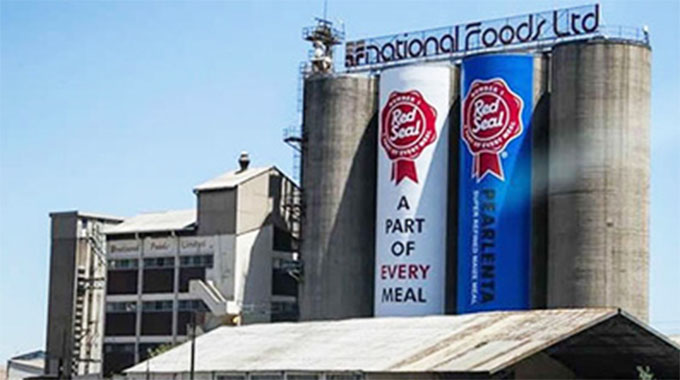GetBucks has room for growth
INITIAL Public Offerings by Micro-finance Institutions (MFIs) are a relatively new phenomenon, with the first “true” public listing of an MFI happening in April 2007. Mexico’s Banco Compartamos (let’s share it) became the first Latin American MFI to go public, raising $467 million. Due to the dearth of IPOs on the Zimbabwe Stock Exchange in recent times, following the announcement of the impending GetBucks IPO, a somewhat justifiable sense of euphoria is palpable domestically.
But, like prior IPOs of MFIs, a certain tinge of restraint is warranted. Heated debates have happened regarding the ethicality of an MFI profiting from the poor in its pursuit of profits for its shareholders, a direct result of going public.
Renowned Economist and founder of Grameen Bank — the world’s first ever micro-lender — has vehemently opposed IPOs by MFIs, arguing that they lead to mission-drift where the institutions will not be able to serve the financially marginalised as focus will squarely be upon profit maximisation.
A different school of thought insists that without public raises of capital, MFIs will not be able to eradicate poverty quickly and include more people into the financial system in a sustainable manner. The jury is still out however, on the trade-off between poverty alleviation and profit-making in the micro-lending business.
Value in GetBucks?
That aside, there is some value in GetBucks, premised on its business model of salary-based loans whose repayment is deducted-at-source. This model is relatively stable and low risk as evidenced by the company’s 98 percent collection rates, which reduces the volatility of earnings through lowering impairments. This could potentially come in handy when serving civil servants who have displayed a greater affinity to borrow in recent years, albeit concerns are that they are now over-indebted.
Loan codes from employers’ payrolls will enable GetBucks to receive deductions before salaries reach borrowers’ bank accounts. Risks will be minimised and information on borrowers will be easily collated enabling greater credit risk management. The strength of this model will be put under scrutiny however, as the company launches alternate products such as agricultural financing as well as other non-deduction payroll lending.
Further, regulation in this area is rather topsy-turvy in most African states and in the long term, this may present problems. Last year, Uganda’s government unilaterally withdrew codes on its payroll and stopped making loan deductions, leaving lenders in the lurch.
GetBucks’ historical average Cost of Funds (CoF) has been c13,2 percent and they forecast this figure to be between 15-25 percent in the next three years.
However, the deposit taking licence that Getbucks was awarded in July leaves it in good stead to enjoy lower CoF in the future as well as access to more funds for on-lending, as it utilises deposits for such purposes.
More crucially however, an increasing share of deposits to total liabilities will lead to wholesale reductions of average CoF and higher margins.
MFIs have been known to have debt-equity ratios of up to 2,0x, and judging from Getbucks’ historical three-year average of 1,43x, the company is well placed to raise more debt that can be used for the purposes of funding growth of its loan book.
Management has indicated a strong desire to aggressively grow its current loan book standing at $11,6 million.
In a market where only 30 percent of the population is banked, there is scope for increased earnings growth and higher shareholder returns as the company serves more people as it expands.
Despite the prevailing economic hardships, strongly capitalised MFI’s will be able to realise growth in the short to medium term and this capacity for GetBucks to raise more capital will play to its advantage.
By nature, MFIs serve the base of the economic pyramid and the risk attached to it is considerably higher.
GetBucks’ pricing model will have to be proportionate to the risk it faces, implying higher asset yields.
As has previously been mentioned, CoF will likely go down, on the back of the deposit taking license that GetBucks has, and this will potentially see higher margins for the business.
The average net interest margin for GetBucks stands at 38 percent over the period it has been in existence.
In the medium term however, one would foresee the company’s margins taper off as risks of lending decline due to improved risk profiling, coupled with strong competition in the market.
GetBucks appears to be a tightly run ship and we have seen the Cost to Income Ratio (CIR) fall over the years.
Employee costs and management fees presently constitute the bulk of operating expenses. CIR will likely increase a bit more as the business seeks to expand, especially coming from the IPO.
From the current CIR of 28 percent, (the average for sub-Saharan Africa banks is 61 percent) management forecasts CIR to hold off at 16 percent, but this is rather too optimistic.
The cost structures need to be monitored regularly and be reined in.
Cost per loan Asset, a measure of the average cost per loan advanced to a customer in monetary terms is low compared to other MFIs, at 22 percent in the last financial year.
This kind of efficiency bodes well for profitability in the future, particularly as the company focuses on cost containment.
But downside risks remain
Borrowers in Zimbabwe are becoming over-indebted, particularly civil servants who are an easy target from furniture retailers, to clothing shops offering them easy credit terms.
This can create a huge debt trap where employees borrow from one lender to offset their debts elsewhere.
If there is any lesson the last sub-prime mortgage crisis has taught us, it is that household debt should not be allowed to keep ballooning as this will present downside risks in the future.
Borrower stress is likely to be magnified as most corporates and the Government (the country’s largest employer) struggle to pay salaries on time, if at all.
If borrowers are struggling, this poses a risk to lenders such as GetBucks, who may find impairments rising, perhaps to a destabilising point.
Memories of what happened with South Africa’s African Bank Limited (ABIL) are still fresh.
GetBucks’ historic three-year average borrowings-to-loans ratio of 44 percent shows that loan portfolio expansion is largely funded by equity.
An unanticipated drop in asset quality may place shareholders at more risk, considering the company’s excess equity.
Though GetBucks does transfer some of this risk from shareholders through the deduction-at-source model, higher borrowings to net-loans ratio would be more desirable, implying that a sizeable chunk of funding risk is allocated to debt sources.
Several studies have shown that, MFI equity is now less risky than before, but it is also much more closely correlated with the conventional financial sector, providing relatively smaller diversification benefits.
There is reason to be bullish on GetBucks as it has room for growth as it expands its product offerings and possibly venture into micro-housing finance and SMEs lending. — Wires.







Comments